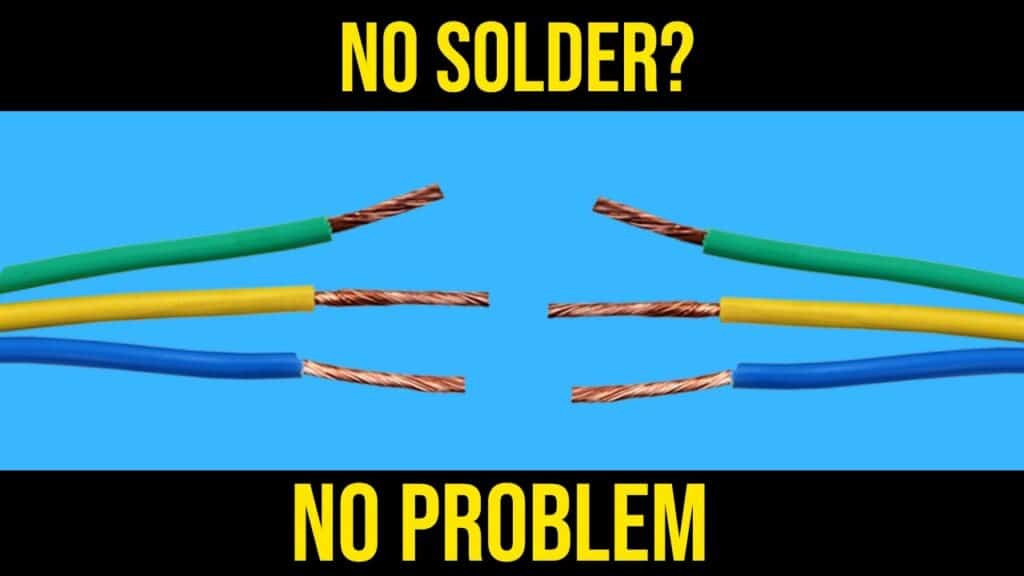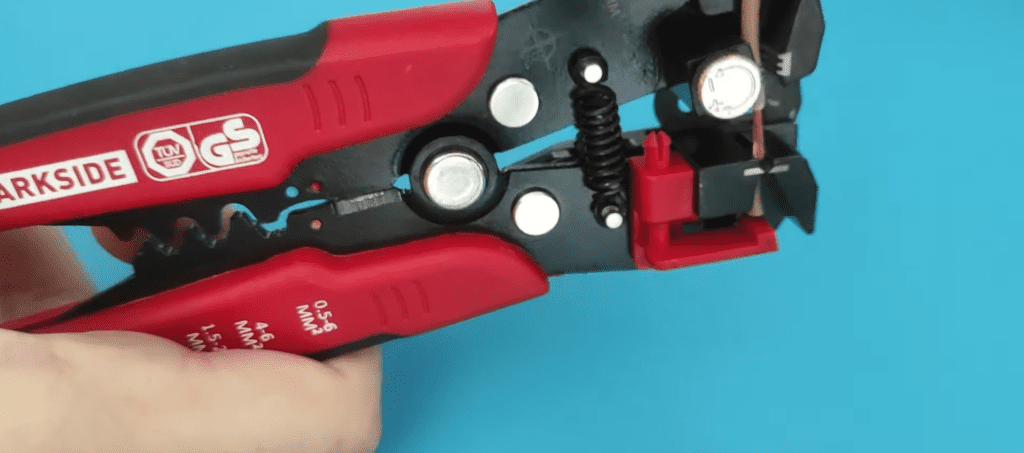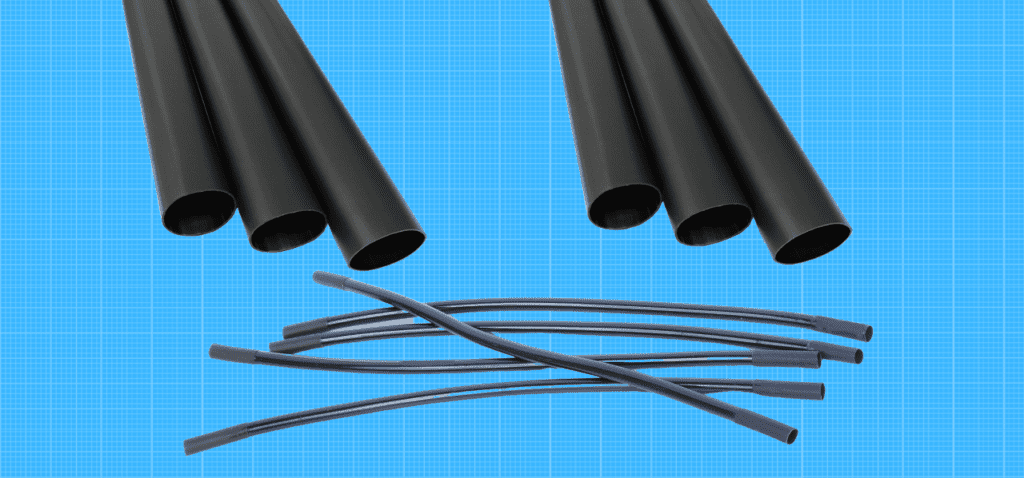How to fix a broken wire without soldering
In this quick and easy guide, we will show you how to fix a broken wire without soldering.
This is a great solution for those who don’t know how to solder or don’t have the time to do it.
All you need is a few simple tools and some electrical tape!

How to remove isolation?
Removing the insulation from a wire is a quick and simple process that can be done with a stripping tool.
To remove the insulation from a wire, first cut off the excess insulation with sharp pliers. Next, hold the stripping tool against the wire and twist it to strip off the insulation.
Once you have removed the insulation and copper from the wire, you can begin to fix a broken wire.

Wago Connectors Method – Strength: High
Wago connectors are a type of electrical connector that allows for quick connections between wires. They are available in both wire-to-wire and wire-to-board configurations and can be used for both DC and AC circuits.
To connect a wire to a Wago connector, first, strip the insulation from the end of the wire. Next, insert the wire into the connector and tighten the screw to secure it in place. Finally, close the lever on the connector to complete the connection.
Repeat the procedure with the other side (wire).
Thanks to their easy-to-use design, they are perfect for applications where quick and easy connections are required.
It literally takes you ten seconds to connect the wires.
The strength of the connection between the wires is as if you had soldered.

Crimp Connectors Method – Strenght: High
Crimp connectors are a quick and easy way to connect wires without soldering. To use a crimp connector, strip the insulation from the wire, insert the wire into the connector, and crimp it shut with pliers.
Crimp connectors can be used for many different applications, including automotive wiring, electrical wiring, and telecommunications wiring. They are available in a variety of sizes, colors, and shapes, so you can find the perfect connector for your needs.
When using crimp connectors, be sure to use the correct size for the wire gauge. If the connector is too small for the wire gauge, it will not be able to make a good connection and could potentially cause a fire.
Crimp connectors are a good replacement for connecting wires without soldering. Give it a try!

Heat Shrinking Tube Method – Strenght: Medium
When connecting a wire with a heat shrinking tube, it is important to make sure that the tube is the correct size. The tube should be just large enough to fit over the wire, and it should be tight enough that it won’t slip off.
Once you have selected the proper tube, you will need to cut it to the right length. Make sure to leave enough extra so that you have plenty to work with.
Twist the wires. Then, pull on the heat shrinking tube.
Now it’s time to start shrinking the tube. This can be done with a heat gun, or by using a flame from a lighter. When using a heat gun, make sure to hold the gun at least six inches away from the tube. If you get too close, you run the risk of melting the tube. Slowly move the gun around the tube, ensuring that all areas are evenly heated.
If you are using a lighter, hold the flame about an inch away from the tube. Again, make sure to move it around so that all areas are evenly heated.
Once the tube has shrunk, allow it to cool for a few seconds before moving on.
If you need to, you can now trim the excess tube off with a sharp knife.

Hot Glue Method – Strength: Medium
When it comes to wiring, one of the most popular methods for connecting components is using hot glue. This is because hot glue is easy to use, and you probably have one at home. It doesn’t require any special tools or equipment.
To use hot glue for wiring, start by heating up the glue gun. Once the glue is melted, hold the wire in one hand and apply the glue to the wire with the other. Wrap the wire around the component you’re connecting it to, and then hold it in place until the glue dries.
Now that you know how to use hot glue for wiring, you can start connecting components in your projects. It’s a fast way to get the job done, and it’s a lot less messy than using solder.

Electrical Tape Method – Strength: Medium
Wires can be easily connected with electrical tape. Simply wrap the electrical tape around the wire a few times and then twist the exposed metal at the end of the wire around each other to create a secure connection.
This is the cheapest option, but not the best. If you’re looking for a more permanent solution, consider using solder. Solder creates a much stronger connection and will last longer than electrical tape.

Video Tutorial
In the video, we show how to connect wire without solder by using these methods.
What can I use instead of solder?
Some home alternatives to soldering wire connections are:
Hot glue gun: This is a popular choice for many people because it is easy to use and is readily available. The downside is that it is not very durable and can easily melt if it gets too hot.
Superglue: This is another popular choice because it is easy to use and dries quickly. However, it is not very strong and can break easily.
Tape: This is a good choice for Temporary connections because it is easy to use and remove. But it is not very durable and can come loose over time.
Electrical tape: This is a better choice for temporary connections because it is more durable than regular tape. But it can be a bit tricky to use and can be difficult to remove.
Wire connectors: These are a good choice for permanent connections because they are very durable and easy to use. But they can be a bit pricey depending on the type you choose.
Crimp connectors: These are another good choice for permanent connections because they are very strong and easy to use. But they can be a bit pricey depending on the type you choose.
How Safe is Fixing Broken Wire Without Soldering?
There is a risk of electrocution when fixing a broken wire, whether or not you solder it. If you are not comfortable with the risks involved, it is best to call a professional.
How to check the Correctness of Wire?
To check the wire connections with a multimeter, first locate the two wires you want to test. Touch the black probe of the multimeter to one wire, and touch the red probe to the other wire.
If the multimeter reading is 0 ohms, then the connection is good. If the multimeter reading is not 0 ohms, then there is a bad connection and you will need to fix it.
